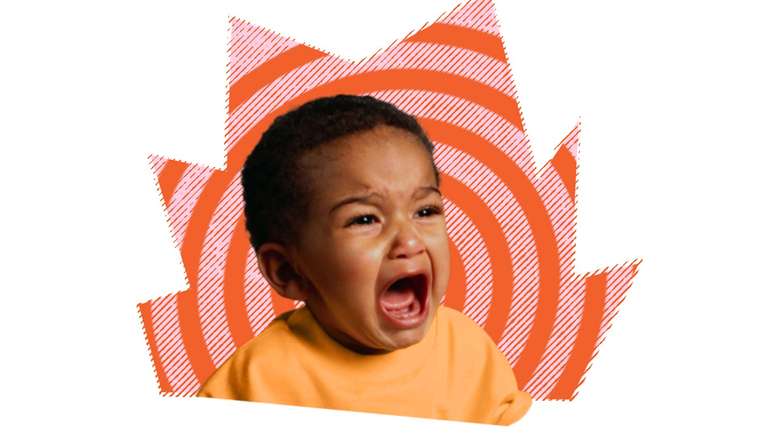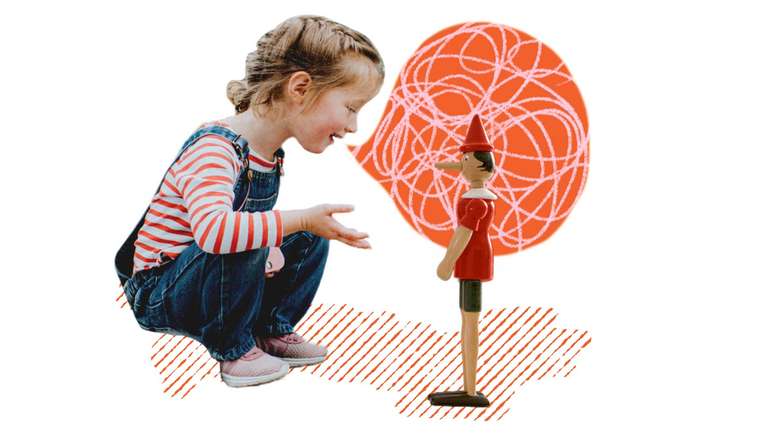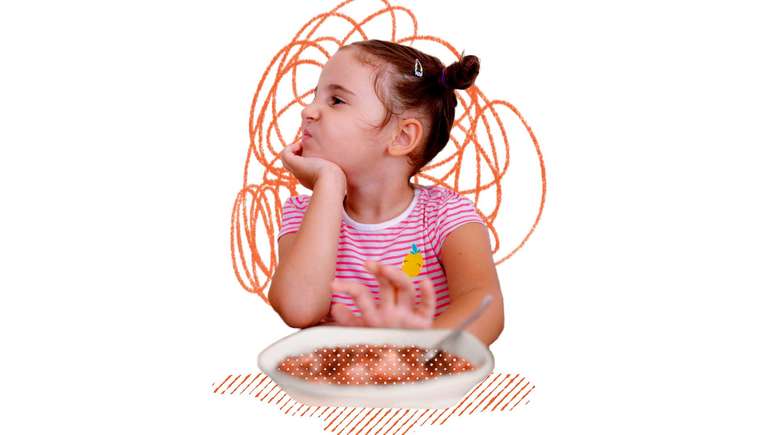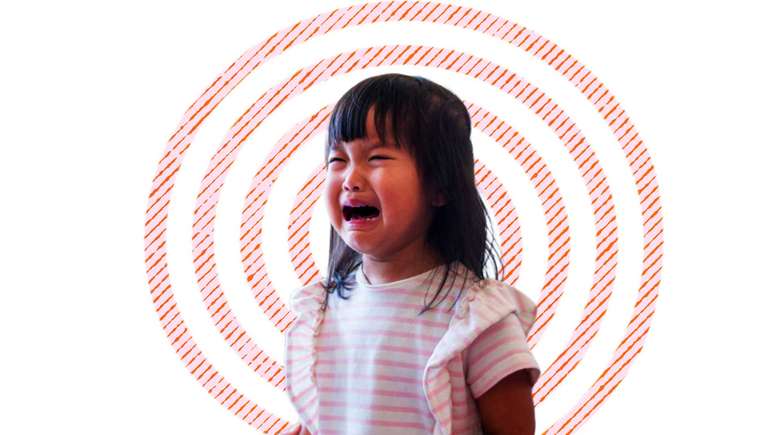We spoke with experts to exemplify everyday cases in the routine with children and offer paths for parents and caregivers, from theory to practice
You respectfully watch dozens of education videos, read books, and take courses. However, when the child throws himself on the market floor, the blood rises and it seems that the whole theory goes down the drain? Calm down, you are not alone on this journey – no, it’s not as simple as it might seem.
html[data-range=”xlarge”] figure image img.img-947b844a7aee00c6948389d15fc03e11roiln9ok { width: 774px; height: 435px; }HTML[data-range=”large”] figure image img.img-947b844a7aee00c6948389d15fc03e11roiln9ok { width: 548px; height: 308px; }HTML[data-range=”small”] figure image img.img-947b844a7aee00c6948389d15fc03e11roiln9ok, html[data-range=”medium”] figure image img.img-947b844a7aee00c6948389d15fc03e11roiln9ok { width: 564px; height: 317px; }HTML[data-range=”small”] .article__image-embed, html[data-range=”medium”] .article__image-embed { width: 564px; margin: auto 0 30px; }
“People think they’re going to get a different education just to learn, but that’s not possible. We have to rewire our brains to react in other ways.“, warns Nanda Perim ( @psimamaa), psychologist, parental educator and emotion specialist. ” Q When you understand that your child isn’t testing you, it’s easier to be patient. When you find yourself invalidating his emotions too often, it’s easier to stop.because you start to see what you’re doing,” she explains.
To help parents and caregivers, we list here common difficult situations with the little ones and we asked advice from Nanda Perim and psychologist and cognitive behavioral therapy (CBT) specialist Cecília Rocha ( @ceciliacicarocha) to deal with them. Note, however, that there is no instruction manual. These are some signs that can help.
WHEN THE CHILD “THROWS A DROP”
The call tantrum is that outburst of anger, in which the overwhelming feelings that we all (children and adults) have get out of control. In this case the important thing is to understand that nothing is “just” for this or for that. Your child’s emotions are real, and there’s no point in telling her there’s nothing to cry about.

“For me, the best example is analyzing how we adults feel in the same situation. If you get a call with bad news and you have a moment of out of control, don’t you want someone to take you in?” asks Nanda. “That’s the important thing: to show adults that, if they are challenged to manage their emotions, imagine a child, who has a developing brain and still doesn’t control the body’s impulses”complete.
What can help:
– Welcome the child and confirm his feelings. “I understand you’re frustrated and angry. Do you want a hug? Do you want some alone time?”
– Know what are the quiet triggers, as Nanda Perim calls ways to help co-regulate the baby’s emotions. Does he like to talk? Do you prefer silence?
– Take the child to a more isolated place he is calm.
– When it’s calm, talk about what happenedbut without blaming her.
– If the child hits, immediately stop the action and say that you understand what he is feeling, but that hitting is unacceptable.
– To count what do you usually do to calm down.
WHEN THE CHILD SEEMS TO CHALLENGE THE ADULT
“This is an issue that has more to do with parenting, because child does not challenge anyone. It has no strategic planning, vision of the future, ulterior motives or symbolic concepts,” Nanda Perim points out.
As the specialist explains, it is natural for the little one to be adamant about what the child’s development requires, which can be read by the adult as a power dispute. “If this phase is asking for autonomy and you threaten his autonomy, there will be resistance,” he says.
What can help:
– remember that your child doesn’t want to face younor manipulate anyone. She doesn’t have the brain capacity for this.
– Communicate clearlybut without using a threatening tone or “do it because I’m your father and I’m in charge”.
– Give chances, valid alternatives so that the little one chooses and feels he has a certain autonomy.
WHEN IT LIES
“Lying can be normal, it’s part of development, but we have to pay attention to the intensity and frequency. When the little one starts to lie excessively or always with a specific theme, it can be a sign that something is wrong”, warns Cecília.

Another essential point is to differentiate it from fantasy. According to the specialist, lying is generally used when the child tries to protect himself from something. However, “in a relationship of trust, there’s no need to defend yourself,” he says.
What can help:
– Clock quantity and intensity some lies. If they are very constant, it is worth seeking help from a child psychologist.
– Try to understand what the lie is communicating. Ask yourself, “How do I handle the child’s mistakes?”
– dialogue without embarrassment. “Son, I understood in that moment that you said something that didn’t happen… I understand that it can be difficult, but in our house the truth is very important”.
– Promote a protected environmentso that the child can express himself without criticism or judgment.
WHEN HE DON’T HAVE THE PATIENCE TO WAIT
For children it is more difficult to wait and this is explained by neuroscience, says Cecília Rocha: “Studies show that the human brain is only mature around the age of 25. Even in adolescence, it still has to develop important areas, such as the prefrontal cortex , precisely the region responsible for impulse control and decision-making”.
What can help:
– Do not forget the child has a developing brain and, for her, it’s really not easy to wait for something to happen.
– explains the reason of waiting.
– Communicate concretely the time (without saying “it’s fast”) and, preferably, in accessible language: “I’m going to take a shower and it will take an episode of Teen Titans ” or “We will exit when the hand reaches 7”.
WHEN THE CHILD DOESN’T WANT TO SHARE
“The little one goes through, especially in early childhood, a phase in which ‘mine’, ‘I’ and ‘I want’ are big news. He is discovering that he is an individual, that he has things, that he wants, that you might want…” Nanda says.
The ideal, therefore, is not to force it, because Agreements like “play a little each” don’t make sense in the head of such a young human being.
What can help:
– Keep in mind that you are not raising a selfish person if you don’t interfere, and that forcing the split will probably only generate stress.
– The development of the ability to share also passes through empathy. Promote play and collaborative games which help in this process.
– Of the example Inside the house.
WHEN YOU DON’T WANT TO EAT
Food selection is part of development, something that should be taken naturally. “However, if the child begins to refuse too much food and this generates anguish and concern in the family, it is necessary to seek professional help,” recommends Cecília Rocha.

Another important point, underlines the psychologist, is to verify if the nutritional status of the child is compromised.
What can help:
– Do not force the baby to eat don’t even show irritation at his attitude, as this can further aggravate the food refusal.
– do not blackmaillike “if you don’t eat it all, you won’t go to the park”.
– Respect the signs of satiety. In infants it can be turning their heads, closing their mouths, not swallowing food, crying… The older ones, on the other hand, play with food, get up from the table and also express themselves verbally.
– Supply times and opportunities for meals, in a quiet and pleasant environment. Even eating at the table and without distractions (TV on, for example) helps.
– Respect the child’s right to have likes and dislikesas well as varying the menu to give her the opportunity to try different foods.
DIGITAL MAGAZINE FOR CHILDREN
we just launched the second edition of the digital magazine Baby! The publication is published quarterly and filled with incredible content about pregnancy, parenting, parenting, health, and much more.
The cover story carries a beautiful interview with Maju Mendonça, Arthur Luis Cardoso and the baby Lulu, who has conquered the internet with her way of speaking and sincere opinions! In addition to the guide on respectful education that you read on this page, the edition also contains a list of the most common diseases in the first year of a child’s life, a text by the influencer Tadeu França on creation by example and the touching story of a mother who loves her twin daughters after discovering breast cancer while still pregnant. Upon completion, you will find a guide full of tips for choosing toys that encourage the interaction of the little ones with other people.
Number 2 of Bebe’s digital magazine is available on GoRead, access it here!
Source: Terra
Ben Stock is a lifestyle journalist and author at Gossipify. He writes about topics such as health, wellness, travel, food and home decor. He provides practical advice and inspiration to improve well-being, keeps readers up to date with latest lifestyle news and trends, known for his engaging writing style, in-depth analysis and unique perspectives.






![Everything starts here: What awaits you on Thursday, July 17, 2025 in the episode of 1221 [SPOILERS] Everything starts here: What awaits you on Thursday, July 17, 2025 in the episode of 1221 [SPOILERS]](https://fr.web.img3.acsta.net/img/d2/ea/d2ea04414756eebab5b843dd8b3686f5.jpg)


